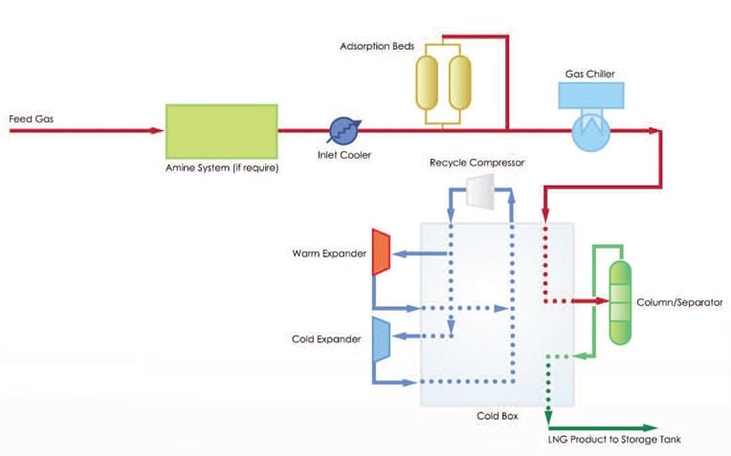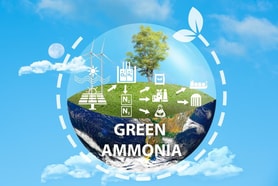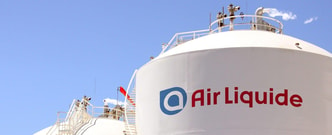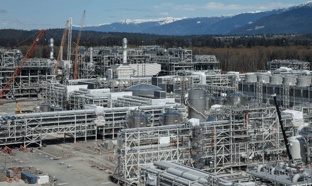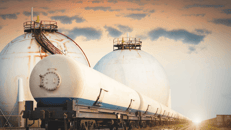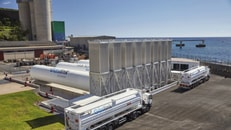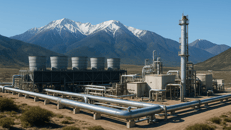Nitrogen Expander Cycle for Small-Scale LNG Plants: A Cinderella Story
The abundance of natural gas from advancements in horizontal fracking technology applied to shale reservoirs has created a new paradigm in the industrial sector to utilize LNG (liquefied natural gas) as a replacement fuel for diesel in many high horsepower applications such as drilling, mining, and transportation, including marine and railroad.
In addition to being a domestic energy source that is environmentally friendlier than other types of hydrocarbon fuels (it emits up to 30% less greenhouse gas than gasoline or diesel vehicles), natural gas is currently much cheaper than gasoline or diesel as an energy source. As such, LNG is a viable replacement to diesel. This has created new demands in the North American market, as well as around the world, for small-scale LNG plants where natural gas is liquefied and transported via trucks to different demand sources very similar to existing diesel market supply scheme. Typically, small-scale LNG plants are defined as plants with total liquid production capacity of roughly 50,000 to 500,000 gallons per day (4–42 million standard cubic feet per day [MMSCFD] or 90–900 metric tons per day).
While hydrocarbon refrigerant cycles dominate the world-class and medium-scale LNG plants, the reverse Brayton nitrogen cycle (or nitrogen expansion cycle) has enjoyed resurgence in the small-scale LNG plants. This article examines unique factors that contribute to the Brayton nitrogen cycle becoming the cycle of choice over other process technologies.
PROCESSES AVAILABLE
There are numerous processes available to liquefy natural gas and it is an industry reality that the mixed refrigeration cycle and cascade cycle are the most efficient processes. Both types of hydrocarbon refrigeration processes allow for refrigeration loops to tightly match the cooling curve of a typical gas liquefaction to achieve high refrigeration efficiency and reduce energy consumption.
... to continue reading you must be subscribed

